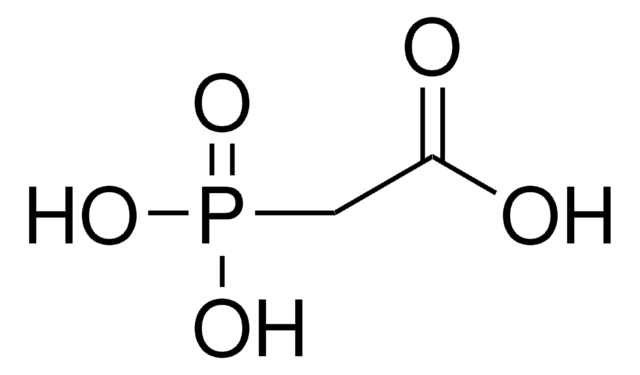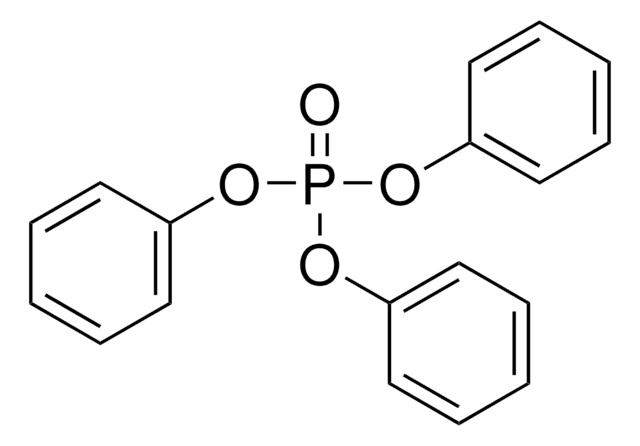612162
Acide phosphorique solution
NMR reference standard, 85% in D2O (99.9 atom % D), NMR tube size 4.2 mm × 8 in. , WGS-5BL Coaxial NMR tube
About This Item
Produits recommandés
Qualité
NMR reference standard
Niveau de qualité
Essai
83.5-86.5% (gravimetric)
Forme
solution
Concentration
85% in D2O (99.9 atom % D)
Technique(s)
NMR: suitable
Taille du tube de RMN
4.2 mm × 8 in. , WGS-5BL Coaxial NMR tube
Densité
1.481 g/cm3
Chaîne SMILES
OP(O)(O)=O
InChI
1S/H3O4P/c1-5(2,3)4/h(H3,1,2,3,4)
Clé InChI
NBIIXXVUZAFLBC-UHFFFAOYSA-N
Vous recherchez des produits similaires ? Visite Guide de comparaison des produits
Description générale
Application
- As standard for the determination of phosphorus-31 nuclear magnetic resonance (31P NMR) chemical shifts of the common phospholipids.
- As external standard for the analysis of lipid composition of human white matter by 31P NMR spectroscopy.
- As external standard during the acid-labile phosphorylation of histone H4 by 31P NMR spectroscopy.
- As reference standard to investigate the surface species present on silica/alumina-supported sodium phosphates by pre- and postreaction MAS31P-NMR and FTIR spectroscopies.
Caractéristiques et avantages
Conditionnement
Mention d'avertissement
Danger
Mentions de danger
Conseils de prudence
Classification des risques
Acute Tox. 4 Oral - Eye Dam. 1 - Met. Corr. 1 - Skin Corr. 1B
Code de la classe de stockage
8B - Non-combustible corrosive hazardous materials
Classe de danger pour l'eau (WGK)
WGK 3
Point d'éclair (°F)
Not applicable
Point d'éclair (°C)
Not applicable
Équipement de protection individuelle
Faceshields, Gloves, Goggles, type ABEK (EN14387) respirator filter
Faites votre choix parmi les versions les plus récentes :
Déjà en possession de ce produit ?
Retrouvez la documentation relative aux produits que vous avez récemment achetés dans la Bibliothèque de documents.
Les clients ont également consulté
Notre équipe de scientifiques dispose d'une expérience dans tous les secteurs de la recherche, notamment en sciences de la vie, science des matériaux, synthèse chimique, chromatographie, analyse et dans de nombreux autres domaines..
Contacter notre Service technique








